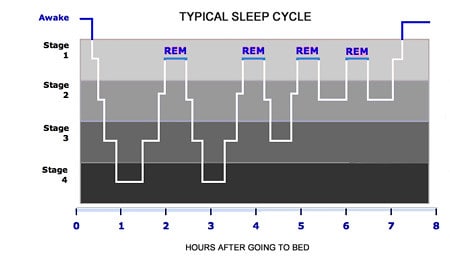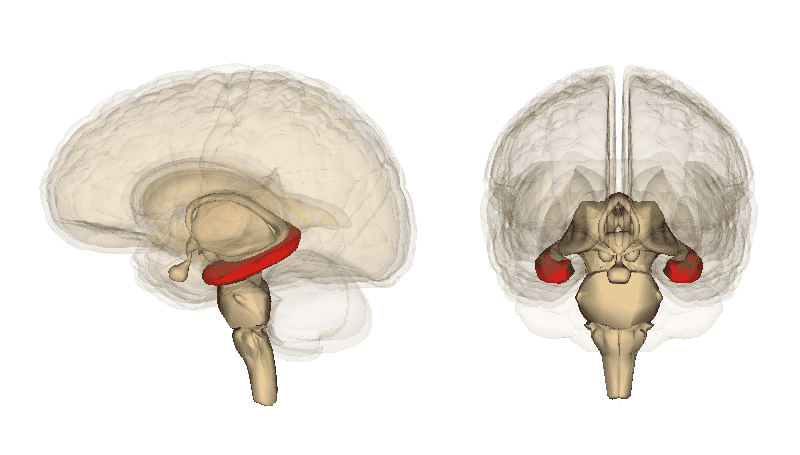
Dreams have been around as long as we have, or so we assume. As a species, we’re guilty of conflating fairly common phenomena with our (read: human) experience. It’s the same with dreams. We claim it as just a human thing. And yet, nothing could be further from the truth. In reality, we’re just one of many animals capable of dreaming.
From much larger mammals, like sperm whales, to much smaller invertebrates like fruit flies, many animals dream. If you have a dog, you’ve probably noticed them dreaming. Adorable (or slightly eerie) behaviors, such as leg twitches and eye rolls while asleep are subtle cues that your pooch is dreaming. Sometimes, you might even catch them barking out loud mid-sleep, somewhat analogous to how some people talk in their sleep.
It’s an established fact: animals can dream, but how can we tell for sure? After all, it’s not like we can just ask them. So, when and how did we realize that animals dream? Let’s find out.
How do we know animals dream?
The ancient Greek philosopher Aristotle was the first to notice that animals dream and wrote his thoughts down in 350 BCE. Specifically, he observed that mammals of four legs — quadrupeds — exhibit behavior consistent with dreaming. For a really long time, this was the first and only research on the matter. It was a monopoly Aristotle enjoyed till the mid-1900s when research finally picked up again.
Dreams and REM
The twentieth century in sleep research was all about rapid-eye movement (REM) sleep. Identified in humans for the first time in 1950, REM is a phase of sleep during which we most frequently dream. Ten years later, in 1960, a similar phase of sleep was also identified in cats, opening up a realm of possibilities for dream-like states in species other than Homo sapiens.

During REM sleep, animals experience fleeting eye movement in multiple directions behind closed eyelids. This visual activity is accompanied by temporary paralysis or atonia. It’s largely this combination of bodily effects that facilitates the occurrence of dreams.
What do animals dream about?
Contrary to popular opinion, animals have memories and most of the time, dream about them as well. A study conducted at MIT proved that, like us, animals dream about their lives. Building on this understanding, that animals retain memories, researchers at MIT’s Center for Learning and Memory examined the minds of sleeping rats. By analyzing brain activity, the team untangled their dreams.
Matthew Wilson, one of the investigators on the team, highlighted that before this study, there was limited insight into what occurs in the minds of animals during sleep.
“No one knew for certain that animals dreamed the way we do, which can involve replaying events or at least components of events that occurred while we were awake,” he explained.
Wilson and his team trained rats to run in circles. As they ran, the team monitored their brains to determine which parts were involved.
The investigators zeroed in on the hippocampus, a part of the brain in the temporal lobe. As the rats navigated their circular paths, the hippocampus showed significant activity. Why does this matter? As it turns out these brain areas are also crucial for memory formation, spatial navigation, and emotional regulation.

Wilson explained that the team concentrated on individual cells within the hippocampus. By monitoring the excitability of these cells, they could delve into the rats’ minds. In doing so, the team could effectively reconstruct the content of their dreams.
Running mazes during sleep
The team didn’t simply record excitable cells in the hippocampus; they also monitored patterns of excitability.
“We looked at the firing patterns of a collection of individual cells to determine the content of rats’ dreams. We know that they are in fact dreaming and their dreams are connected to actual experiences,” Wilson said.
Upon comparing the hippocampal patterns observed during running with those during REM sleep, investigators discovered something significant. Out of the roughly 40 REM cycles examined, approximately half mirrored the patterns observed on the circular track.
What does this mean? The general inference is that rats in the study dreamt of running. By comparing hippocampal activities, investigators were able to pinpoint exactly where on the track the rats were… in their dreams! But that’s not all. The team was also able to determine whether the rats were running or standing still during these dream sequences.
It’s an amusing conclusion, yet not without reason. The rats in the study dreamt about their day for the same reasons that you and I do: memory consolidation.
It all comes back to REM sleep
We consolidate memories as we make them, but not entirely. The leftover bits? We organize them in our sleep. More specifically, in REM sleep. This process is handled by, you guessed it, the hippocampus — the part of the brain also responsible for dreams.
Thanks to work like Wilson’s, we know that animals do dream, and contrary to popular assumptions, they dream about their everyday lives and consolidate memories just like we can.
Dreams and memories aren’t just a mammalian thing either. Similar findings from studies conducted at the Max Planck Insitute for Biological Intelligence have shown that pigeons dream of flying when asleep.
“During REM sleep, we observed strong activity in brain regions responsible for visual processing, including in those areas that analyze the movement of a pigeon’s surroundings during flight,” said co-author Mehdi Behroozi of Ruhr University Bochum.
“Based on these observations, we think that birds, just like humans, dream during REM sleep, and might be experiencing flight in their dreams.”
As Wilson succinctly explained, “dreams are the ultimate off-line experience. This work demonstrates that animals are capable of re-evaluating their experiences when they are not in the midst of them.”









